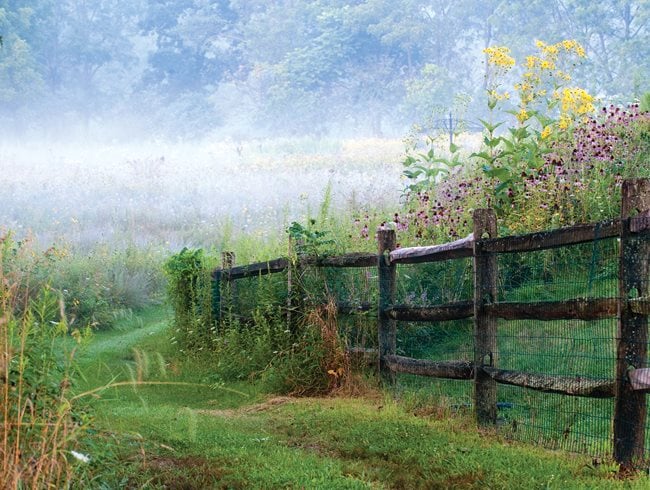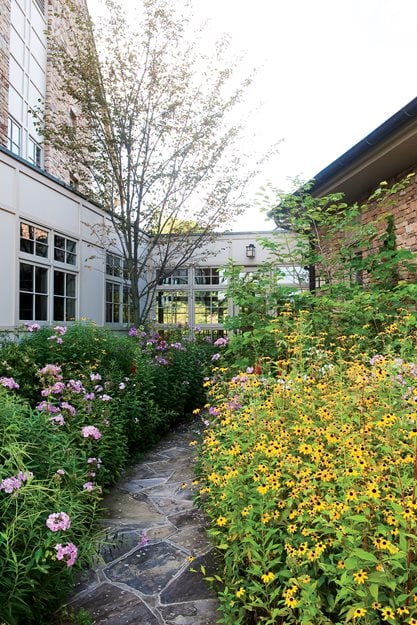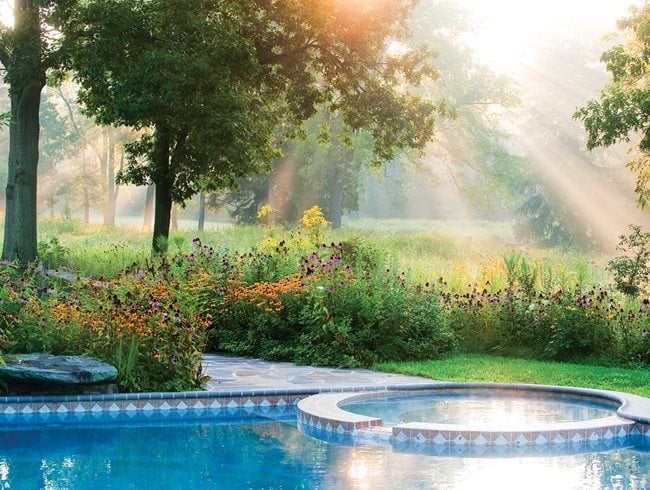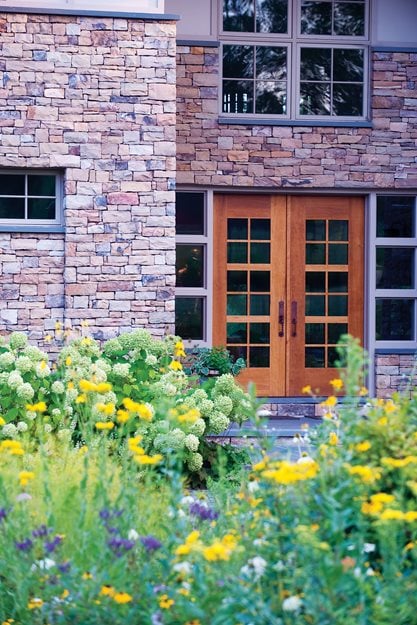Wildflower Meadow - A Pasture Perfect Meadow Garden
Native (and extremely local) plants create stunning wildflower fields in 30 acres in rural Pennsylvania.This was Larry Weaner’s dream job, the one he’d been preparing for all his life. The owner of a large country place near Allentown, Pennsylvania, wanted a landscape that would be beautiful, easy to maintain, and wildlife-friendly, and he was giving Weaner free rein. The designer would draw on his decades of experience creating natural gardens and his lifelong affinity for nature—a love that went back to his boyhood in urban Philadelphia, 60 miles away. There, the closest wilderness was a little neighborhood patch of scruffy woods, which he explored microscopically until he knew every rock and tree. The site was long-neglected, resting in a valley of former farms, patterned with corn and hay fields, hedgerows of Norway spruce, and volunteer trees. The owner wanted to bring out its bucolic history and rustic character and play up its natural attributes, preserving big trees and luring back indigenous wildlife and birds that once thrived there.
RELATED:
Native Plants - How & Why to Grow Natives
How to Create a Meadow Garden

The mowed edge of a meadow runs up to a split-rail fence and hillside of purple coneflowers, rangy yellow cup plant (Silphium perfoliatum), and other native wildflowers and grasses. (Photo by: Rob Cardillo)SEE MORE PHOTOS OF THIS GARDEN
The landscape Weaner designed showcases his expertise with native (and extremely local) plants as well as his holistic design philosophy. Weaner says his key tenets are:
- A garden should not be just about beauty but also about experiencing nature.
- You don’t have to compromise aesthetics when you use natives.
- Bring together plants that know how to get along in nature, and they will intermingle gracefully in a garden.
Weaner estimates 80 percent of the plants he used here are native to the Allentown area, and the other 20 percent are native to the East and Northeast. The natives, chosen carefully, not only cut down on maintenance but add an aesthetic and emotional element. “They’re real plants, not just showpieces,” he says. “And real plants have autonomy.” They stand up to the onslaughts of invasive weeds.
Weaner’s plan divides the property into three main sections. Outlying areas were left in their original condition, mainly as farm fields. Closer to the house, seasonally changing sustainable meadows replaced rundown pastures. Directly around the house and the comfortable outdoor living spaces, colorful low-care, native perennials, shrubs, and trees surround and immerse the residents in nature at close range.

Like a path trod through wildflower fields, a walkway of Pennsylvania bluestone leads to the back door. Tall Phlox paniculata are at left, black-eyed Susans are at right. (Photo by: Rob Cardillo)SEE MORE PHOTOS OF THIS GARDEN
Converting the pastures to beautiful sustainable meadows took several years. The first major steps were to mow the pasture short and kill unwanted grasses. Weaner started entirely with seeds—no growing plants—sowing with a machine that creates furrows and deposits seeds in shallow trenches, avoiding the tilling and composting that encourage weed growth. His seed mix included native grasses such as Indian grass; and wildflowers such as bee balm, Joe Pye weed, New York ironweed, and Penstemon digitalis. He chose different species for the site’s different habitats. Little bluestem grass sprouted in dry areas and blazing star claimed the wetter ground. The result is year-round, ever-changing beauty: muted browns and reds in winter, vibrant greens in spring, kaleidoscopes of wildflowers in the summer, and autumn colors from the grasses.
Once established, the meadows are relatively easy to maintain, even at a not-insubstantial 30 acres. To keep woods from encroaching, the meadows are mowed once at the end of each winter and occasionally burned off. Weed control takes about a day each year. Weaner warns that invasive weeds are relentless; they may be relatively easy to pull out or hoe in a small back yard, but in an acre-plus meadow, the plants must have the moxie to fight off weeds by themselves.

The pool is shaped with several jogs to accommodate a shallow play area, a lap lane, and a hot tub. Weaner wanted to create a sense of traveling a path while swimming, ending with a clear view from the hot tub into a meadow. There’s a diving rock at left. (Photo by: Rob Cardillo)SEE MORE PHOTOS OF THIS GARDEN
Closer to the house, the landscape appears more arranged. Midsummer sweeps of purple coneflower, black-eyed Susan, and many other perennials (as well as native shrubs and trees) casually complement the wild style of the surrounding meadows. Behind the house, a terrace, paths, a pool, and other hardscape give close-up looks at the plantings and views of the meadows. The terrace nudges right into the surrounding wildflowers. It is made of local bluestone; running through it is a pathway vein of nonlocal stone, selected for its lighter color that’s not as hot on bare feet walking from the pool.

A wildflower meadow stretches all the way to the doors of the house. (Photo by: Rob Cardillo)SEE MORE PHOTOS OF THIS GARDEN
With some of the landscape a decade or more old, it is now easy to see nature’s handiwork embellishing Weaner’s design and plantings and welcoming back great blue herons and other long-lost wild creatures. Weaner takes special delight in one section of the garden: There, the purpletop, pagoda dogwood, and fragrant sumac—species that have crept out of the meadows—intermingle so naturally and robustly that they look like they must have been part of the original, inspired design.
Love Pennsylvania gardens? Check out Garden Design's self-guided day trip to 3 must-see Philadelphia-area gardens.
See more gardens in Pennsylvania.
